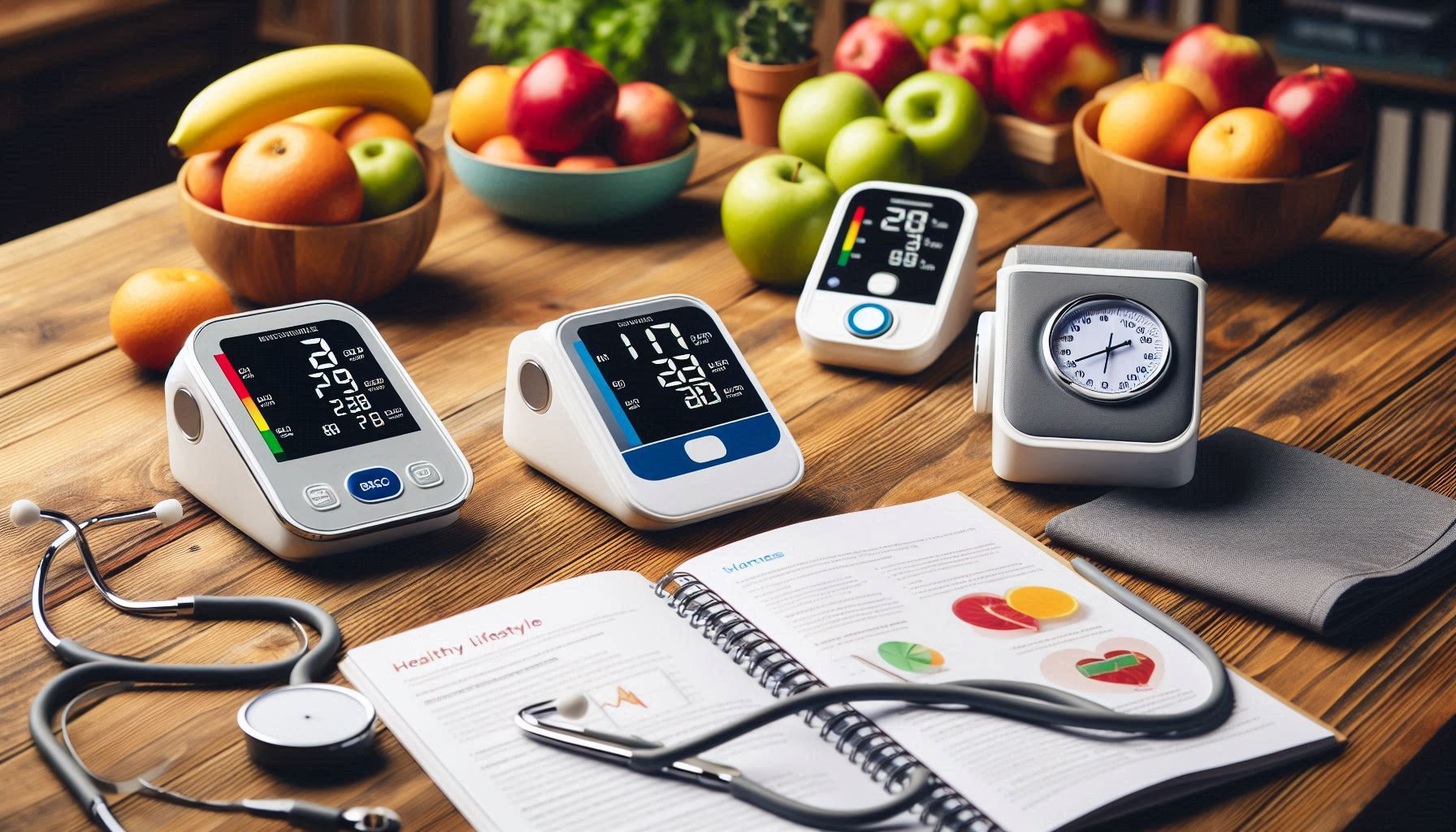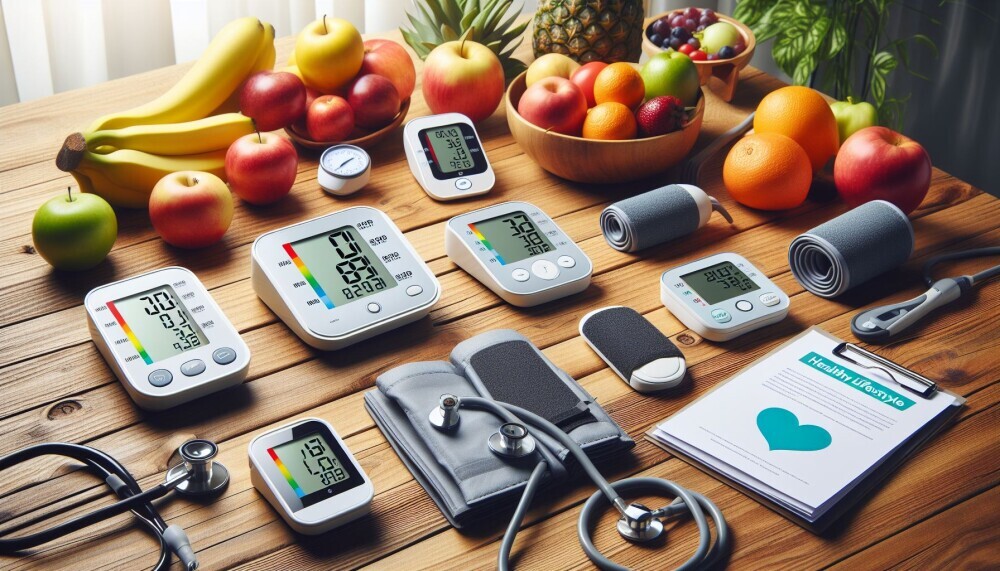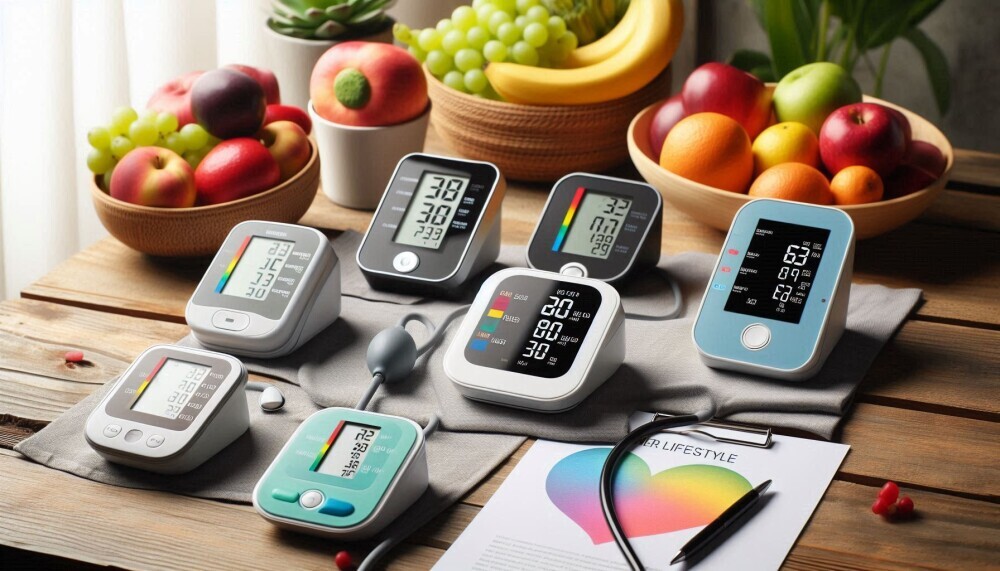Blood pressure monitors have become ever so popular along with other wearable health tech devices. In this article, we shall be focussing on How To Get The Best From Your Blood Pressure Monitor. Do you use a blood pressure monitor at home for you and your family? Let us know what you think of your device and it’s performance. Let’s get started!
Introduction
Blood pressure monitors are now common household devices. Essential tools for anyone wanting to keep an eye on their cardiovascular health. Thanks to advancements in at home monitoring technology, accurately tracking your systolic and diastolic blood pressure has never been easier. A reliable monitor puts valuable data in your hands, empowering you to make informed choices about medication, diet, exercise, and stress management.
But owning a monitor isn’t enough. To truly benefit, you need to use it correctly, interpret results wisely, and integrate readings into your health routine. In this guide, we’ll explore how to optimize your home blood pressure monitor. From picking the right device and mastering accurate measurements to using your data for better healthcare decisions.
How To Get The Best From Your Blood Pressure Monitor
1. Choose the Right Monitor for You
Selecting the correct monitor is the first step:
- Cuff style: Upper arm cuff monitors tend to be the most accurate for home use. Wrist monitors are more convenient but often less reliable.
- Validation: Choose a device validated by reputable medical organizations (e.g., British Hypertension Society or European Society of Hypertension).
- Features: Look for models with backlit screens, memory storage, averaging functions, irregular heartbeat detection, and multiple user profiles.
- Budget range: Expect to spend £30 to £100 for a reliable, fully featured upper arm model.
Trusted options include the Omron M7 Intelli IT, Withings BPM Connect, and Microlife BP A2 Basic. Balanced for accuracy and ease of use.
2. Set Up and Use It Properly
Accurate readings start with proper setup:
- Position your arm correctly: Sit down, relax for 5 minutes, keep your feet flat, and rest your arm on a table so the cuff is at heart level.
- Use the right cuff size: A cuff that’s too small or large can skew results. Measure the midpoint of your upper arm and match it to the device guidelines.
- Avoid caffeine, smoking, or exercise for 30 minutes prior to measuring. They can artificially elevate blood pressure.
- Take multiple readings: Run two to three readings a minute apart and average the results. Daily measurement builds a more accurate long term picture.
Proper technique ensures each reading reflects your true blood pressure rather than temporary spikes.
3. Create a Routine That Works
Consistency makes your readings meaningful:
- Measure at the same time each day: Typically morning (before meds) and evening.
- Record all measurements using the monitor’s memory or a health app/sheet. Track systolic, diastolic, and pulse rate.
- Note context: Record activities, stress, caffeine, or sickness. These factors help explain any anomalies.
- Share reports: Bring your readings to doctor’s appointments. Many clinics trust well kept home logs.
A consistent routine transforms sporadic numbers into actionable personal data.
4. Interpret the Data Correctly
Understand the numbers:
- Normal: Less than 120/80 mmHg
- Elevated: 120 to129 systolic and less than 80 diastolic
- High Blood Pressure (Stage 1): 130 to139 or 80 to 89
- High Blood Pressure (Stage 2): 140 or higher, or 90 or higher
- Hypertensive Crisis: 180+ systolic or 120+ diastolic. Seek immediate medical attention
One high reading isn’t a diagnosis, but persistent elevation warrants medical follow-up.
5. Use Your Readings to Improve Health
Knowledge becomes power when you act on it:
- Lifestyle changes (Diet, exercise, sleep) often lower readings significantly.
- Medication adjustments: Blood pressure tracking helps doctors fine tune medication dosages.
- Behavioural triggers: Noticing spikes related to work stress or caffeine can guide targeted adjustments.
- Follow up plans: Home readings can detect white coat (higher in clinic) or masked hypertension (higher at home).
A monitor isn’t just for tracking. It’s a tool for managing and improving your health.
6. Understand Limitations & Avoid Pitfalls
Home monitoring comes with caveats:
- Cuff misplacement or incorrect posture causes inaccuracy.
- Arrhythmias (e.g., AFib) may produce “irregular” errors. Seek medical confirmation.
- Last-minute actions (caffeine, rushing) can falsely elevate readings.
- Device calibration matters: Recalibrate annually or replace after 3 to 5 years. Use clinic comparison to verify accuracy.
Having awareness of these pitfalls ensures you trust, and use your monitor well.
7. Integrate with Digital Health Tools
Make your monitor work smarter, not harder:
- Sync apps: Many devices connect to apps like Health Mate, Omron Connect, or Apple Health.
- Remote sharing: Share logs with family or doctors via app links or PDF reports.
- Medication reminders: Some apps allow you to link measurements with medicine schedules.
- Alerts & trends: Set thresholds to get notified if readings exceed healthy ranges.
Technology makes data sharing and analysis easier than ever before.
8. Monitor Lifestyle Impact
Blood pressure isn’t static. It reflects your choices:
- Diet: Salt intake, fruit, vegetable, and water balance affect readings.
- Exercise: Regular activity lowers pressure long term, although it’s safe to measure when at rest.
- Stress & sleep: Chronic tension or poor sleep pushes up pressure. Good rest reduces readings over time.
- Weight & alcohol: Even small weight loss or reduced consumption can positively shift numbers.
Link changes in your daily life with your readings to see what actually works.
9. FAQs You Should Know
1. Can I measure blood pressure at the wrist?
Wrist monitors exist but are more sensitive to arm position and can be less accurate. Upper arm cuffs remain the gold standard.
2. How often should I replace the cuff?
Check for fabric wear or stretch every 6 to 12 months. Replace as needed or when the monitor suggests.
3. Should I track my pulse too?
Yes, heart rate and rhythm anomalies can provide extra insight, especially if pulses are irregular or unusually high.
4. What do I do if readings vary widely?
Ensure consistency in measurement conditions. If variation continues, take a rest and remeasure. Record all readings and discuss with your doctor.
5. Is home monitoring enough without doctor visits?
Home monitoring complements in clinic visits. Some conditions require 24 hour ambulatory monitoring to track variations across the day.
6. Can anxiety affect my readings?
Yes, anxiety, known as “white coat syndrome,” can temporarily spike blood pressure in stressful settings. Home readings in calm environments tend to be more reliable.
10. When to Seek Professional Help
A home monitor helps, but it doesn’t replace medical care:
- Consistent Stage 1 or Stage 2 readings: Seek medical evaluation.
- Symptoms like dizziness, chest pain, or irregular heartbeat: Consult a doctor immediately.
- Medication concerns: Use your readings to guide discussions on dose and drug types.
Early detection and timely action can prevent complications.
Conclusion
An accurate blood pressure monitor is a valuable health ally, but only if used properly. By choosing the right device, creating a consistent measurement habit, recording contextual details, and integrating findings into lifestyle or medical planning, your monitor becomes a powerful wellness tool.
When used rightly, it offers peace of mind, proactive health control, and a clearer path toward long term wellbeing. If you’ve not taken steps to track your blood pressure yet, now’s the perfect time. Good readings can save lives, through better insights, earlier action, and empowered decision making.
Our Thanks!
Many thanks to you for reading this article on How To Get The Best From Your Blood Pressure Monitor. We hope that you have found it helpful. Why not take a look at our blog? There are plenty more really helpful and informative articles on a range of wearable health tech subjects. You should read our related article which is titled The 6 Best Wrist Blood Pressure Monitors.
Please let us know in the comments which type of blood pressure monitor you are currently using or plan to buy in the future!
**Here is a bit of transparency. Our website www.vertevia.com does contain affiliate links and Amazon links. So, if you did make a purchase through the website, we may receive a small commission. This is at no extra cost to you whatsoever. It’s just a way for you to support us as we continue to bring you top quality content**
All the best!
Eamon





